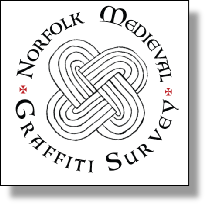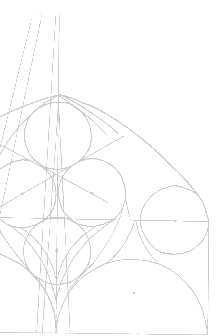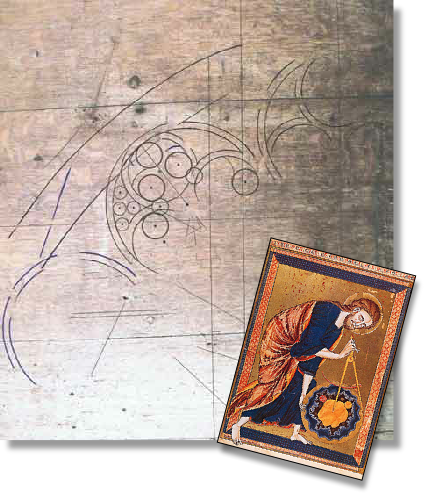










Alongside the more informal graffiti inscriptions the volunteers have also occasionally come across sketches, designs and working drawings actually created by the medieval craftsmen who worked on the church. Until the beginning of the survey such architectural designs were thought to be incredibly rare, with only a couple of dozen having been discovered in the whole of the UK. Since the survey began we have managed to double the number of known examples. They can vary tremendously in scale, location and detail, but all share the common theme – that they have been created using precision tools. The largest of the examples located at Binham Priory was nearly two metres tall, whilst the sketch for a window design at Weston Longville was only 140mm across.
In terms of location, the designs can be found just about anywhere where a flat surface was available, although the rear of rood screens was particularly popular. Such flat surfaces would have made a perfect drawing board for the craftsmen and, as the lines are now exceedingly difficult to make out, many of the examples have remained unnoticed for centuries. Having located at least one example on medieval plaster it is also likely that a great many more of these designs have been lost in relatively recent centuries as medieval plaster in poor condition has been replaced and renewed. Whilst telling us little in terms of social history, these designs can tell us a great deal about the medieval design process and the building of these amazing East Anglian churches.












